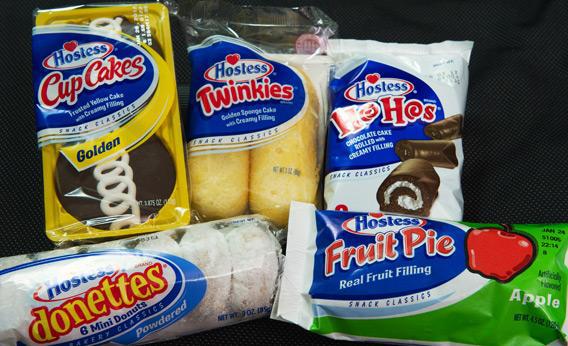A bankruptcy judge approved the liquidation of Hostess brands last week. Historic brands like Twinkies, Wonder Bread, and Ho Hos will be sold at auction to the highest bidder. Will the buyers get the exclusive right to use the recipes for those products?
Not exactly. Confectioners rarely patent their recipes, because applying with the U.S. Patent and Trademark Office means publishing the ingredients and methods. The legal protection lasts only 20 years, after which time anyone can profit from the creation. Manufacturers instead guard their recipes as trade secrets, a status that isn’t time-limited. The company forces employees to sign nondisclosure agreements and sues rival manufacturers that extract their methods and formulas from workers. The companies that eventually buy Hostess brands will gain access to those trade secrets and the right to enforce the secrecy agreements. If, however, someone cracks the Twinkie recipe and manufactures an identical product under a different name—the brand names are protected by trademark—there’s very little the new owner will be able to do.
Candy companies go to extraordinary lengths to protect their recipes. In her essay “Trade Secrecy in Willy Wonka’s Chocolate Factory,” law professor Jeanne C. Fromer explains that the fictional Wonka’s lock-and-key approach to candy making isn’t far from reality. Companies store their recipes in safes. For many years, Mars, the company that makes Skittles, Snickers, and M&Ms, refused to reveal its president’s name. The company also builds its own machines and blindfolds visiting repairmen. No Hershey employees know the proportions of ingredients in the company’s chocolate bars.
Recipes are patentable, in theory, but few of your kitchen creations would qualify. An idea must be novel and nonobvious to deserve legal protection. That’s a difficult standard to meet, because most recipes are combinations of widely available ingredients. Recipes are most likely to win patent protection if they involve some novel manufacturing process. Several inventors, for example, have obtained patents for variations on the peanut-butter-and-jelly sandwich by rearranging the ingredients to extend shelf life.
Recipes can also be copyrighted, which prevents others from copying and selling the instructions on how to make a product. Copyright, however, doesn’t protect the food itself from commercial exploitation. In other words, you’re not allowed to sell copies of the current Toll House chocolate chip cookie recipe, but you can make and sell the cookies.
Got a question about today’s news? Ask the Explainer.
